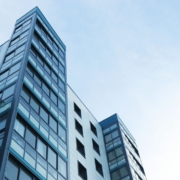How to protect your business against non-compliant cladding
The UK’s Grenfell Tower disaster has had widespread implications for professionals in Australia’s construction industry. Here’s how to help protect yourself if you’re a contractor who’s worked on any Australian building project.
The UK Grenfell Tower disaster claimed the lives of 72 people on 14 June 2017.
The tragedy unfolded on television and computer screens around the globe, serving as a sharp and tragic wake-up call to governments and regulators around the world that cheap, non-compliant cladding materials could create devastating fire hazards for high rise buildings.
In Australia, the threat combustible cladding poses remains very real. As evidenced by a recent fire at an inner city high-rise in Melbourne that forced the evacuation of hundreds of residents and required more than 60 fire fighters to bring it under control.
Authorities and insurance companies have been quick to put new procedures and policies in place, including the Victorian Cladding Taskforce and NSW’s Fire Safety and External Wall Cladding Taskforce
In NSW, new laws require owners of existing buildings with combustible cladding that fall within specified categories to register their building with the NSW Cladding Registration portal by 22 February 2019.
As non-compliant buildings are identified around the nation, owners may be ordered to remove the cladding from their buildings.
This has been seen already at the Lacrosse tower building in Docklands, Melbourne, which caught fire in 2014. In turn, the apartment owners are now suing the builder and other consultants to cover the costs.
“They’ve initiated legal action against the builder and a lot of the consultants who worked on the project,” explains Steadfast’s Broker Technical Manager, Michael White.
“Because one thing about all these kinds of situations is that anybody who had anything to do with the project, no matter how remote, can get sued.”
To view the full article, please visit Steadfast Well Covered here.








